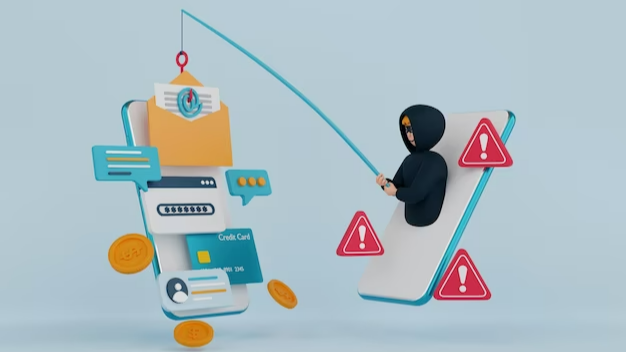In an increasingly digital world, protecting our personal and financial information from cybercriminals has become more crucial than ever. One of the most prevalent and deceptive methods employed by hackers is phishing scams. These scams aim to trick unsuspecting individuals into divulging sensitive data, such as passwords, credit card numbers, or social security information. However, with the right knowledge and precautions, you can arm yourself against phishing attacks and safeguard your online security.
This article provides essential tips to help you protect yourself from phishing scams. By understanding the tactics employed by scammers and adopting preventive measures, you can minimize the risk of falling victim to these fraudulent schemes. These tips in detail and empower ourselves with the tools to stay safe in the digital landscape. By the end of this blog, you will have a better understanding of protecting yourself from phishing scams. Please visit our website to see more about phishing protection.
What are Phishing scams?

Phishing scams are malicious attempts by cybercriminals to deceive individuals and extract sensitive information such as passwords, credit card numbers, or personal data. These scams typically occur through fraudulent emails, messages, or websites that impersonate reputable organizations or individuals.
The primary goal of phishing scams is to trick recipients into providing their confidential information willingly or unknowingly. The scammers then use this information for various fraudulent activities, including identity theft, unauthorized financial transactions, or unauthorized access to online accounts.
In a phishing scam, attackers typically masquerade as trustworthy entities, such as banks, popular websites, or reputable organizations. They create fake emails, messages, or websites that closely resemble the legitimate ones, tricking recipients into believing they are interacting with a legitimate source. The scammers often employ various psychological manipulation tactics to increase the chances of success.
Tips For Protecting Yourself From Phishing Scams
1. Be Wary of Suspicious Emails
Phishing scams are often carried out through fraudulent emails that appear to be from a legitimate source. These emails may contain suspicious links or attachments that, once clicked, can install malware or lead to fake login pages designed to steal your information. Always be wary of emails from unknown senders or emails that ask you to provide sensitive information.
2. Check the URL of websites
Scammers may create fake websites that look identical to legitimate ones, such as online banking or shopping sites. Before entering any sensitive information, always check the URL of the website and ensure that it begins with "https://" and that there is a padlock icon next to the address bar. This indicates that the website is secure and has a valid SSL certificate.

3. Enable Two-Factor Authentication
Two-factor authentication (2FA) adds an extra layer of security to your accounts by requiring a second form of identification in addition to your password. This could be a fingerprint scan, a security token, or a verification code sent to your phone. Enabling 2FA can greatly reduce the risk of unauthorized access to your accounts, even if a hacker has your password.
4. Keep Your Software Up-to-Date
Outdated software can be vulnerable to security exploits that can be exploited by hackers. It is essential to keep all your software, including your operating system and browser, up to date to ensure that security patches are installed promptly.
5. Be Cautious of Public Wi-Fi
Public Wi-Fi networks can be an easy target for hackers to intercept your internet traffic and steal your sensitive information. Avoid accessing sensitive accounts or providing personal information when using public Wi-Fi, and use a virtual private network (VPN) if possible.
Overall, phishing scams are becoming increasingly sophisticated, and it's important to stay vigilant and protect yourself from falling victim to them. By following the tips outlined in this post, such as being cautious of suspicious emails, verifying links before clicking on them, and using anti-phishing software, you can significantly reduce your risk of becoming a victim of phishing scams. Remember, it only takes one wrong click to put your sensitive information at risk, so take the necessary precautions to keep yourself safe online.